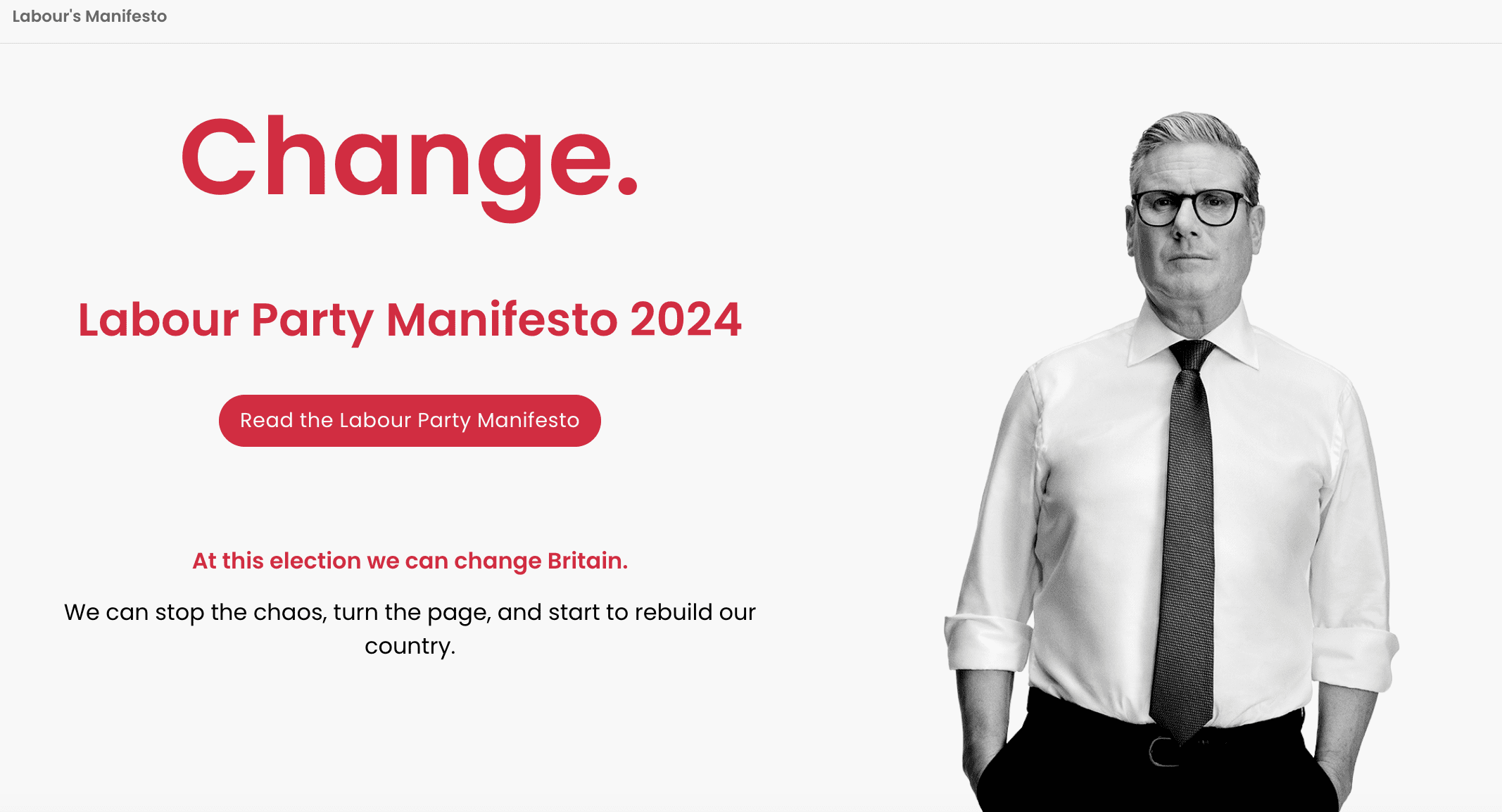We’re rocketing fast towards a General Election and with less than two weeks of campaigning left (sigh of relief all round!) the polls are predicting a significant Labour victory.
But what does that mean? And what should you be doing now to prepare for what looks certain to be life under a Labour or Labour led government with Kier Starmer as Prime Minister?
Understanding Labour’s agenda – mission-driven government
Labour has been seriously preparing for government for some time. With talk of ten-years of national renewal and re-building Britain, a central part of Kier Starmer’s pitch to the country is to deliver stable government after the turbulence of recent years under the Conservatives.
At the heart of that is what Labour calls “mission-driven government”.
In its own words from the manifesto Labour defines that as “raising our sights as a nation and focusing on ambitious, measurable, long-term objectives that provide a driving sense of purpose for the country.”
That both outlines Kier Starmer’s personal and political philosophy and is designed to set out a very different tone to ‘the chaos’ of the Conservative government.
Labour has five wide ranging missions that sit at the heart of its manifesto:
- Kickstart economic growth
- Make Britain a clean energy superpower
- Take back our streets
- Break down barriers to opportunity
- Build an NHS fit for the future
Each mission covers a range of policies Labour wants to deliver in a joined-up manner. You can agree or disagree with the politics but what is undeniable is Labour has set out a clear plan – and this plan presents a huge opportunity for membership organisations to both engage with government and show leadership with employees, partners and members.
Organisations can show their value by taking the opportunity to understand, engage and help shape and contribute to the implementation of this new look national agenda.
Engaging with Labour’s agenda
So what should you be doing?
- Be clear about what you want from government – keep it short and simple and be positive and realistic.
- Understand Labour’s agenda – its missions are set out in the manifesto (and summarised in our presentation) – look at the areas that are relevant to you so you know what’s coming and can spot opportunities to engage with the government agenda
- Look at how your agenda links with Labour’s – what shared objectives do you have where you can work with government to deliver outcomes that benefit your stakeholders, fit with the new agenda and will be positive for the UK as a whole?
- Use Labour’s language – sending emails to new Ministers talking about ‘levelling up’ isn’t going to be helpful. Think how your organisation can help ‘kickstart economic growth’, ‘make Britain a clean energy superpower’ and ‘break down barriers to opportunity’ and present your engagement with government in those terms.
- Use data and evidence – substantiating your position is helpful. Whether you are advocating for change or stressing why a particular policy proposal might cause unintended consequences that threaten the overall delivery of Labour’s mission, examples of impact are hugely powerful.
- Keep your stakeholders up to speed – whether that’s employees, members or partners, tell them what you’re doing and keep them informed about how they can help or alert to things coming down the line they need to prepare for.
Labour’s first 100 days are going to be unusual as we don’t typically have summer elections, but they will be hitting the ground running. The party’s pitch to voters makes a big play of certainty and stability, and its 133-page manifesto (the missions are the most important bit) outlines its plans.
Don’t wait for July 4th to be over to start planning your next steps.
Featured image from The Labour Party
